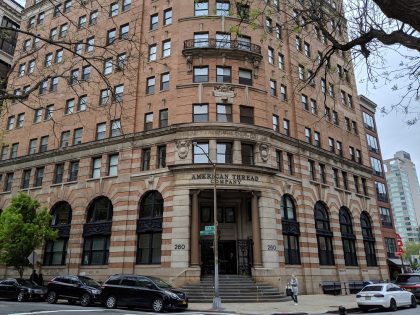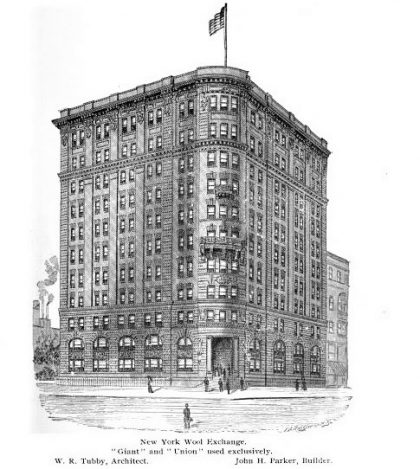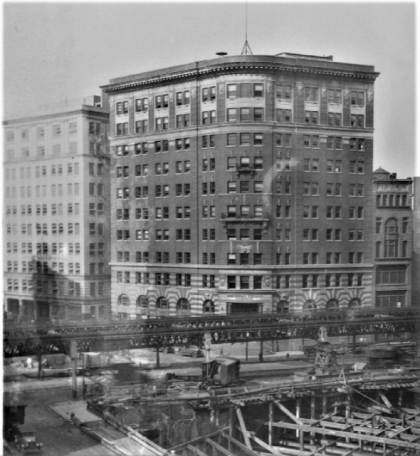The History of Tribeca, One Building at a Time
The History of Tribeca Buildings database — compiled from Tom Miller’s posts at Daytonian in Manhattan — has a new, special entry here today. The American Thread building has an complex history that Tom provides in the full post; there are just some highlights here. If you enjoy these, and you will, then you should definitely check out his website, which also has write-ups about buildings all over the island. And don’t miss his book, Seeking New York: The Stories Behind the Historic Architecture of Manhattan — One Building at a Time.
Architect William Bunker Tubby filed plans in July 1894 for an 11-story brick structure to cost $275,000. That amount would quickly rise. The following month, on August 22, The Evening World announced “New Wool Exchange Building” and reported “The wool dealers of the city are anxious to get into their new exchange building, which is in course of erection at 144 and 150 West Broadway and which is to cost $500,000.” That would be more than $15 million today. (West Broadway was renumbered in 1897, giving it the building the address of 260.)
In April 1901 the Real Estate Record & Builders’ Guide announced that the American Thread Company had purchased the Wool Exchange Building for $700,000 (about $21.3 million today). The New York Times reminded readers that the American Thread Company currently occupied three floors and that “The Wool Club has elaborately fitted up rooms on one of the upper floors, and part of the street floor is occupied as a Post Office sub-station.” [The penthouse there today.]
On August 25, 1977 Laurie Johnston, writing in The New York Times remarked that the neighborhood was taking on a Soho-like personality. Advising that “Tribeca” was “the unofficial name for the Triangle Below Canal Street (pronounced Try-beeka by logic, Try-becka by custom),” and mentioning high-profile figures in the arts who had recently moved in, she added that the American Thread Building was “among other major Tribeca Buildings being prepared for conversion” to residential.
The renovation, which was completed in 1981, prompted The Times’ Paul Goldberger to call the project “probably TriBeCa’s finest and most luxurious condominium conversion so far. It is a more elegant building that many of its neighbors, graciously rounding the curve of the street as West Broadway meets Beach Street.”















